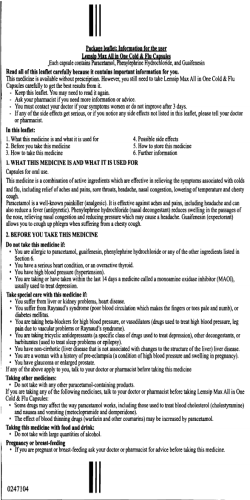
KERATOSIS PILARIS
KERATOSIS PILARIS What is the aim of this leaflet? This leaflet has been written to help you understand more about keratosis pilaris. It tells you what it is, what causes it, what can be done about it, and where you can find out more about it. What is keratosis pilaris? Keratosis pilaris is a very common and completely harmless skin condition. In the population as a whole, keratosis pilaris may affect as many as one person in three. Its name gives some idea of what it is; ‘keratosis’ means that there is too much keratin, which makes up the tough horny outer layer of the skin, while ‘pilaris’ comes from the Latin for hair (pilus). In keratosis pilaris, many small (1 to 2 mm across) horny plugs can be seen blocking the hair follicles on the upper and outer parts of the arms and thighs. This can look like goose bumps, but feels slightly rough. What causes keratosis pilaris? Causes of keratosis pilaris are not fully understood but it is genetic in more than half those affected with it. Hence it is usually found in more than one member of a family. Keratosis pilaris is harmless, and is not infectious but can cause emotional discomfort. Is keratosis pilaris hereditary? Yes, in 50-70% of adolescents. The way it is inherited varies from family to family, but it often fits into an ‘autosomal dominant’ pattern; this means that there will be a 1 in 2 chance that each child of an affected parent will inherit the condition. Keratosis pilaris appears when extra keratin accumulates in the hair follicles. This usually starts in childhood, and becomes more obvious during adolescence and in adulthood. For reasons not fully understood the condition seems to be better in the summer than in the winter perhaps 4 Fitzroy Square, London W1T 5HQ Tel: 020 7383 0266 Fax: 020 7388 5263 e-mail: [email protected] Registered Charity No. 258474 because in winter the skin often gets dry while in summer the sweat makes it less dry. What are the symptoms of keratosis pilaris? Some people find their keratosis pilaris looks unattractive. The skin feels rough and appears as though it has permanent goose bumps. Occasionally keratosis pilaris is itchy. What does keratosis pilaris look like? The groups of small bumps are most common on the backs of the upper arms and on the fronts of the thighs. Sometimes keratosis pilaris also affects the back and chest and, in less common forms, the face and eyebrows as well. Some redness may appear around the small bumps. How will keratosis pilaris be diagnosed? There are no specific tests for keratosis pilaris; however, your doctor will recognise it easily. A biopsy is seldom needed, especially if it is associated with acne or eczema that do not get better with treatment and the biopsy is to explain that the person has two conditions not one, and one of them will not be cured (the keratosis pilaris). Can keratosis pilaris be cured? No; however, it often (but not always) does clear up during adult life. How can keratosis pilaris be treated? No treatment clears keratosis pilaris completely but it can improve the condition temporarily. This is very useful, especially for those who have an occasion and they wish to have clear soft skin during that occasion. Emollients (moisturisers) can be of benefit. Creams containing salicylic acid, lactic acid and/or urea are more effective than emollients, and can be purchased over the counter or obtained on prescription from the doctor. Other treatments can be used but they are not offered on the NHS and can be expensive, and none of them cures it. These include corticosteroids topically, photodynamic therapy, various lasers, chemical peels and dermabrasion. In many cases it may be best to wait for the problem to improve on its own. Self Care (What can I do?) General measures to reduce skin dryness may help: 4 Fitzroy Square, London W1T 5HQ Tel: 020 7383 0266 Fax: 020 7388 5263 e-mail: [email protected] Registered Charity No. 258474 Use mild soaps Apply emollients (moisturisers) frequently Have tepid showers or baths rather than hot showers or baths The use of an exfoliator may sometimes be of help Where can I get more information about keratosis pilaris? Web links to detailed leaflets: http://www.dermnetnz.org/acne/keratosis-pilaris.html This leaflet aims to provide accurate information about the subject and is a consensus of the views held by representatives of the British Association of Dermatologists: its contents, however, may occasionally differ from the advice given to you by your doctor. This leaflet has been assessed for readability by the British Association of Dermatologists’ Patient Information Lay Review Panel BRITISH ASSOCIATION OF DERMATOLOGISTS PATIENT INFORMATION LEAFLET PRODUCED MARCH 2008 UPDATED APRIL 2011, APRIL 2014 REVIEW DATE APRIL 2017 4 Fitzroy Square, London W1T 5HQ Tel: 020 7383 0266 Fax: 020 7388 5263 e-mail: [email protected] Registered Charity No. 258474
© Copyright 2025


















